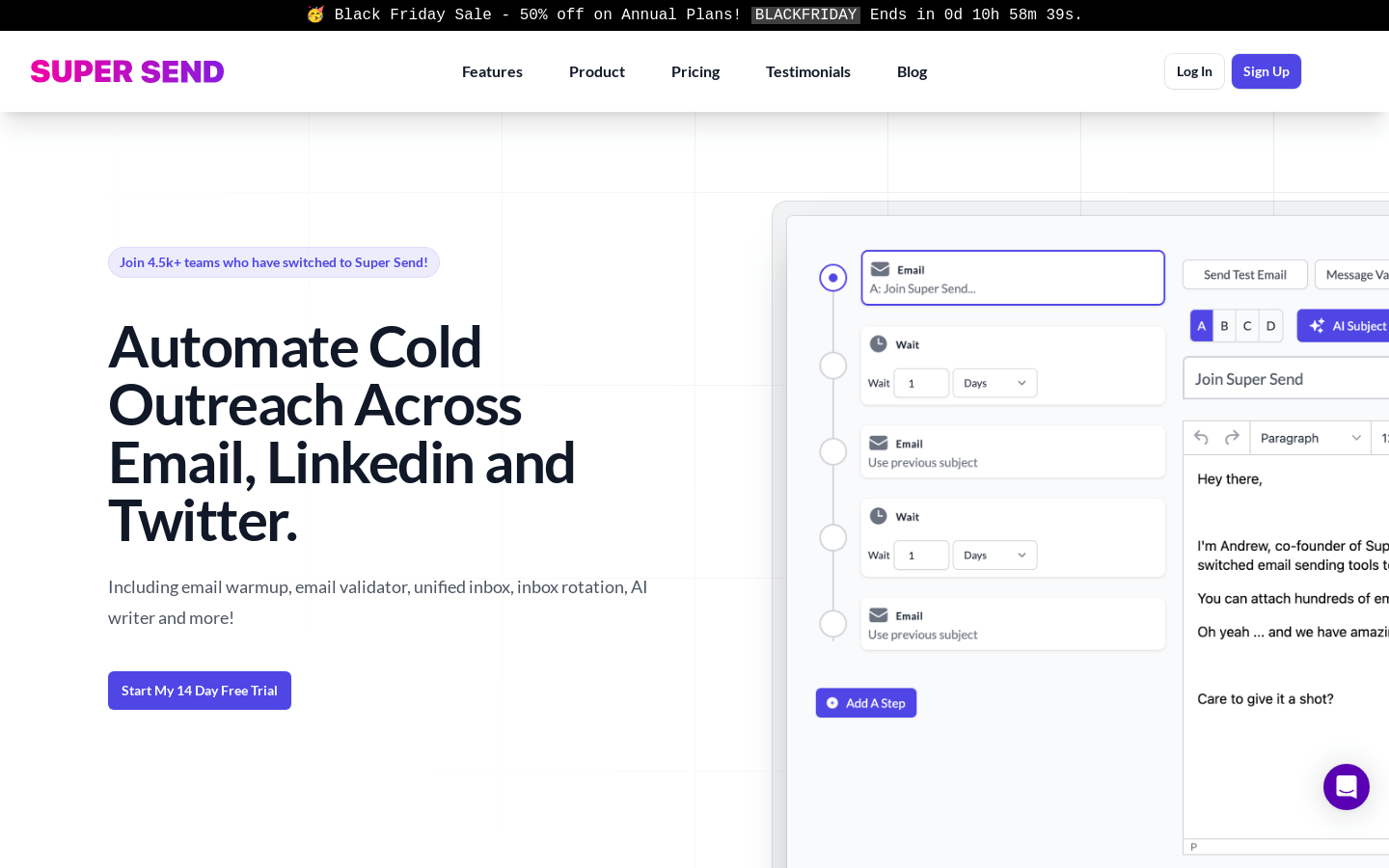

Super Send 2.0
Overview :
Super Send is a tool that automates cold outreach on LinkedIn, Twitter, and email. It offers features like email automation, LinkedIn automation, and Twitter automation, including email warming, email verification, inbox unification, inbox rotation, and AI writing. Super Send also supports conditional sequences, custom task nodes, A/B testing, reporting, and analytics. Super Send offers different plans for users to choose from. Super Send is suitable for individuals and teams who need to conduct cold outreach.
Target Users :
Super Send is designed for individuals and teams who need to conduct cold outreach. It can be used to accelerate sales, execute outbound marketing campaigns, and acquire new customers.
Use Cases
Use Super Send to automate cold outreach emails and boost your sales speed.
Leverage Super Send to automate outreach on LinkedIn and acquire new customers.
Utilize Super Send to automate marketing campaigns on Twitter and enhance brand visibility.
Features
Email Automation
LinkedIn Automation
Twitter Automation
Conditional Sequences
A/B Testing
Reporting & Analytics
Featured AI Tools

Make
Make is an innovative product that surpasses traditional no-code workflow integration and automation platforms. It allows you to create, build, and automate workflows visually, limited only by your imagination. You can design powerful workflows using Make without relying on developer resources. Key features of Make include: Replacing Zapier, Workato, and Tray.io; providing a platform with infinite possibilities; boosting productivity across all departments and teams; offering solutions in areas such as marketing, sales, operations, IT, and human resources; automating work and building new things.
Automated Workflow
287.6K
Chinese Picks

UI TARS
Developed by ByteDance, UI-TARS is a novel GUI agent model that focuses on seamless interactions with graphical user interfaces through human-like perception, reasoning, and action capabilities. This model integrates key components such as perception, reasoning, positioning, and memory into a single visual language model, enabling end-to-end task automation without predefined workflows or manual rules. Its primary advantages include robust cross-platform interaction capabilities, multi-step task execution, and the ability to learn from both synthetic and real data, making it suitable for a variety of automation scenarios like desktop, mobile, and web environments.
Automated Workflow
242.3K















